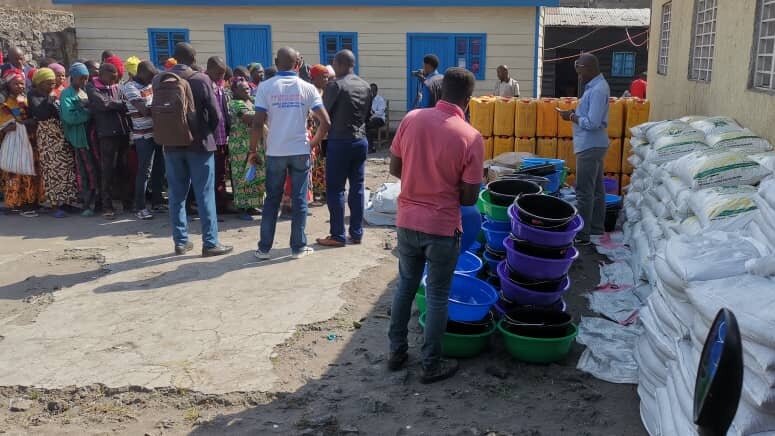Newsletter, 2 July
Evacuation and returning home
We were among the 400,000 who evacuated from Goma after the eruption of Mount Nyiragongo. We drove 8 hours on mainly dirt roads to Bukavu on the other side of Lake Kivu. Many evacuees were less fortunate, walking for miles through the night, sleeping outside and struggling to find food and clean water. Most stayed away from Goma for 1 or 2 weeks, returning when the tremors had died down, and the risk of gas escaping from the lake had diminished.
In the days following the eruption the focus was on repairing city’s water and electricity supplies and reopening the main road north, which had been cut off by the lava flow. 10,000 homes have been destroyed, as well as hundreds of fields, with the lava 3 metres deep in places. Most residents have returned ‘home’, as they did after the last eruption in 2002, and will eventually rebuild on top of the new lava. The fields may never be used again.
Tearfund very quickly provide safe drinking water to thousands in Sake, where the majority of evacuees had fled. The Diocese of Goma provided emergency care packages to those still in Goma whose homes had been destroyed (see above): plastic sheeting for shelter, fuel and utensils for cooking, rice, beans, oil, salt and water and clothes. Thank you so much for your generosity which has enabled us to reach so many more families.
Rebuilding in Kanyanja
In our parish closest to the volcano, the population fled on the night of Saturday 22 May and returned on Sunday 23 May to find their homes and fields destroyed, their church covered in lava and the school unusable. But by the following Sunday they were meeting again as a church. Rev Kader recalls,
“We really wanted to meet as a church the week after the volcano and so we took 3 of the plastic sheets provided by the diocese and used them to extend the home of one of our church members. 70 people came, and we all sat on stones because we had no benches. We also had no instruments and no communion table, but it was a real encouragement to be together as a church family.”
Life is very hard in Kanyanja. As well as continuing to give emergency relief we will soon provide seeds, livestock and capital for small-scale enterprise. Eventually we will rebuild the church and the school, and look to support the church and community in rebuilding their homes. This twin focus on ongoing emergency needs but also resilience for the future is our approach across all of the affected areas in Goma.
In other news
Anthea has just returned from a 2-week trip to Rwanda and Central African Republic. Martin has just hosted his first Diocesan Synod to ‘clarify’ the voting regulations to elect the next bishop and also set up our diocesan tribunal. Next week Martin goes to Kindu in the interior of DRC for the national synod of the Anglican Church of Congo.
Schools in Goma are back after a 3-week volcano break, and Zachary and Silas have exams next week. When school finishes the plan is to go to Zimbabwe on holiday, as coming back to the UK looks to be too expensive and too much hassle.
After having been fairly blasé about the first 2 waves of Covid, the residents of Goma are beginning to take the 3rd wave a bit more seriously. Cases in Kinshasa are giving cause for concern. In Goma there are now fines for non-wearing of masks and just across the border Rwanda has again imposed a strict lockdown and hospitals are overwhelmed in Uganda. Vaccine take-up is still extremely low, and the diocese has just started a project with CAFOD to equip journalists and church leaders in the fight against Covid.
How can you pray?
For the ongoing volcano response – Tearfund, Diocese of Goma, government etc
For those who’ve lost homes and livelihoods
For the first three pastors to appear before the diocesan tribunal in the next few weeks
That DRC is spared the worst of a 3rd wave of Covid
From Martin, Anthea, Silas, Zachary and Imogen
